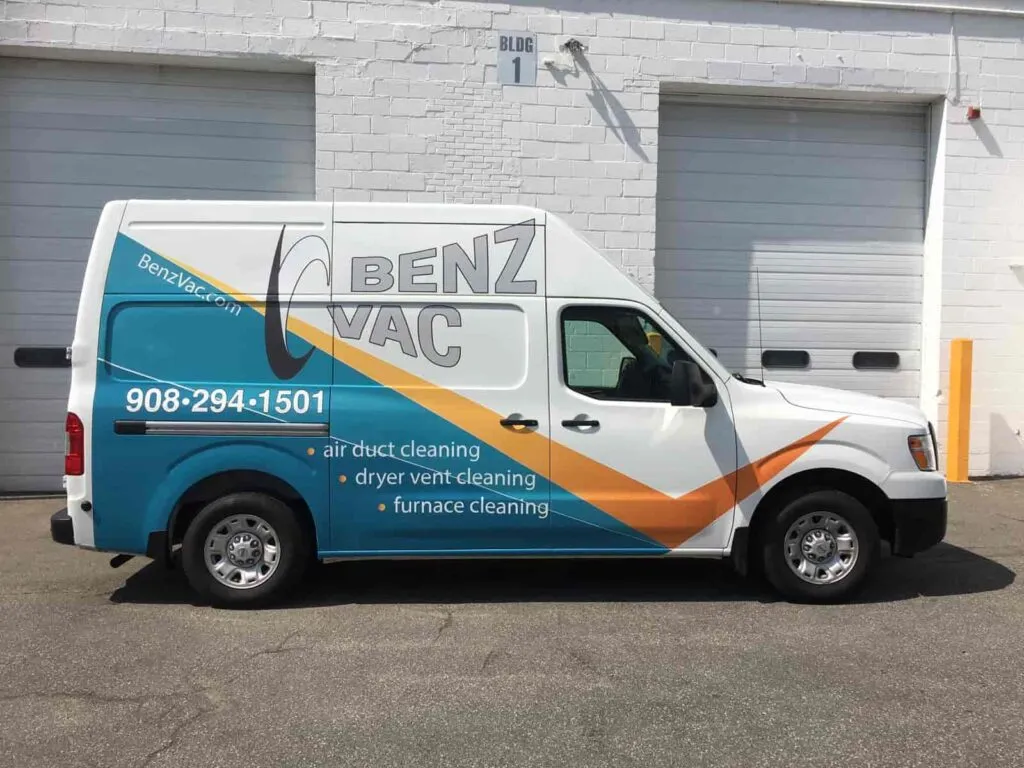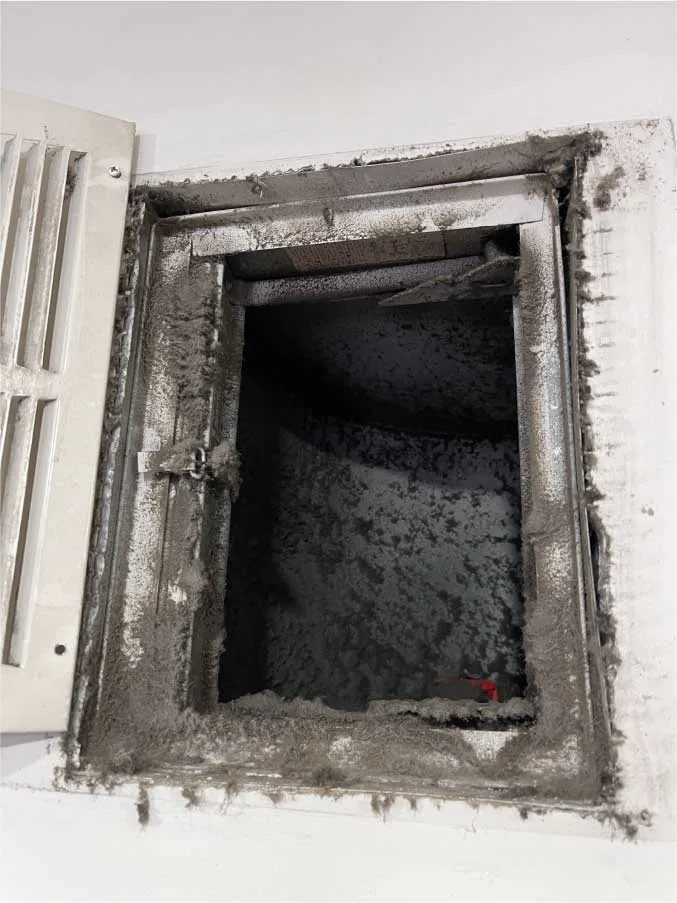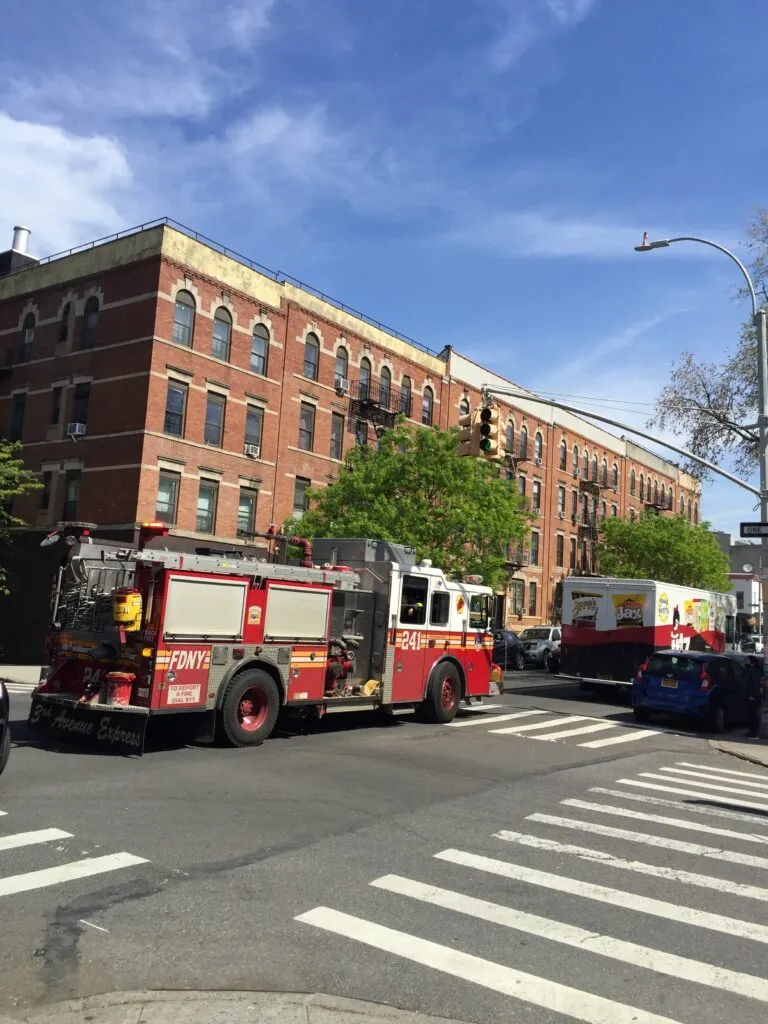Dryers have become an indispensable appliance in modern households, making laundry chores more convenient and efficient, except dryer vent issues. Nowadays, it’s hard to imagine our lives without dryers. I mean, most of us are juggling work and personal lives, and anything that gives us ease is all we need. Now the problem comes when our beloved appliance, i.e., our dryers, start malfunctioning.
Dryer Vent Issues Basics
A dryer vent gets rid of excess heat, moisture, and lint. A dryer vent cleaning is an essential part of a dryer. Without one, your home would get hot, moist, and linty. You’d have fire safety issues and mold problems.
It’s dangerous not to have a dryer vent, and it can lead to further problems. Dryer vents catch dust and moisture. If you don’t have a dryer vent, you’re putting your laundry room at risk of fire and mold growth.
Additionally, gas dryers release poisonous carbon monoxide. Unless properly vented, these dryers can fill your house with CO. In other words, if you have a dryer, you need a dryer vent.
Historically, builders used polyvinyl chloride (PVC) for dryer vents, but it was flammable, so the duct should be made of metal. Safety demands a metal duct. Considering that the duct is getting rid of a lot of moisture, it should vent to the exterior.
Dryer Vent Cleaning and Maintenance
Homeowners should schedule dryer vent cleaning at least once a year if they fall out of the roof, which costs $150 to $300. You can do it yourself if it goes through the sidewall. Usually [sidewall] vents are just a foot or two long, so they can disconnect them, clean them out, and reconnect them.
Nonetheless, your vent should be at least 6 feet away from the air conditioner if it is on the sidewall. Otherwise, your air conditioner may become clogged with lint. Moreover, when you push air through your air conditioner, it absorbs heat.
Metal ducts last for many years. It’s most likely the exhaust vent that needs repair. Someone accidentally hitting the exhaust vent requires a replacement.
Common Dryer Vent Problems
Compressed Dryer Transition Tubing
The wall and back of many dryers are close together. This is something you need to watch out for. Pushing the transition tubes against the wall will compress or flatten them. In this case, you should replace the tubes with semi-rigid metal ducts. There’s a bit of movement needed. A professional dryer technician can help you with the unit’s installation.
Strange Sounds and Vibrations
Sometimes our dryer vents produce weird noises and really strong vibrations. This may happen when a dryer drum seal fails inside your dryer vent.
These symptoms indicate a failed dryer drum seal. Frequently encountering external objects leads to this issue. This problem can be fixed by replacing the seal. Regular dryer duct cleaning from reliable duct cleaning services can help you avoid this problem.
Sudden Dryer Power Off
You may have encountered this situation before with your dryer vent and if not, it’s always worthwhile to know. Often, people complain that the dryer sometimes shuts off unexpectedly after a couple of minutes. A broken thermostat could be the culprit behind this.
Many factors can result in thermostat breakage. Most often, it’s blocked ventilation. Also, overloaded machines and clogged lint screens cause this problem. Replacing the thermostat is the key solution to this problem. Just contact a good dryer vent chttps://benzvacnj.com/leaning company or duct cleaning services to help you with this.
Clogged Vent Exhaust
Even regular cleaning of the dryer lint trap doesn’t stop lint from entering the dryer duct and vent. The issue with this is that lint accumulation can entirely block the dryer vent.
As a result, the dryer’s exhaust doesn’t vent outside. The exterior vent opening can also be a nesting site for birds or rodents, as the warm air makes them want to stay there. Every month, clean the vent’s exhaust and wet/dry vacuum any debris. Consider replacing your foil dryer duct and vent with a new semi-rigid metal vent that goes well with current building codes.
Jammed Exhaust Flap
A flap is usually at the end of the vent on dryers. When the dryer’s not running, the flap stays closed. This keeps outdoor air out of your house. Jammed exhaust flaps don’t let the exhaust gases out. It’s usually lint that jams the flap. Regular dryer vent cleaning can solve this problem.
Corrugated Exhaust Vents Are Deteriorating
You aren’t expected to understand the ins and outs of the dryer vent as that is a professional’s job. But understanding or at least having some awareness about your appliances is a wise thing to do. You should try to be vigilant about what materials are safe to use in a dryer vent so that you can prevent any serious mishaps.
Previously, foil and plastic dryer ducts were used in dryer vents. Some old homes may still use those. However, safety codes no longer accept them, and they can cause fires and leaks. If you have plastic and foil dryer ducts, get semi-rigid metal ducts instead of the old materials.
Incorrect Installation
This can result in a bunch of issues that have nothing to do with the dryer. In an electric dryer, improper installation could cause the circuitry to fail, and in a gas-powered dryer, it could cause gas leaks and affect your laundry room’s temperature. Your best bet here is to seek help from professional dryer vent cleaning services for correct dryer vent installation.
Damaged or Unstable Ducts
Parts of the vents may fall to the ground if the dryer ducts are broken or droopy. Gas ducts that are damaged or loose pose a fire and health threat and should be fixed right away if your dryer is powered by gas. In this case, you need to replace all damaged ducts and secure any loose ducts with clamps.
Long Vent
For your dryer to work efficiently, the dryer vent should be as short as possible. For optimal performance, consider relocating your dryer to a more suitable spot that allows for improved access to the exhaust. Keep in mind that your dryer vent length should not exceed 25 feet.
Is My Dryer Vent Blocked?
So what’s the basic function of your dryer? To dry your clothes. However, sometimes your dryer doesn’t dry your clothes fully. This is a signal that something is wrong with the dryer. Your dryer performs poorly when its vents are blocked or restricted, which restricts airflow. Heat is emitted from the dryer through the vent.
The most obvious sign of clogged dryer vents is extra-long clothes drying cycles. If you vacuum the vent out many times, the problem should go away. Remember, a dryer won’t work if its dryer vents are completely blocked.
Your dryer vent can get clogged for many reasons. Usually, it’s the lint that gets caught in the vent most of the time. Over time, this builds up and obstructs local airflow. Furthermore, some clogs happen because of nests and other things.
Even after vacuuming the dryer vents multiple times, your dryer refuses to work. If this happens, then it’s time for a physical examination. Clothing, especially towels and washcloths, has tiny fibers called lint. The problem is that despite cleaning the dryer lint trap several times, fiber can still be left behind. Various openings in your dryer allow it to enter. Tiny bits of lint accumulate over time, blocking the vent and restricting the flow of hot air.
Types of Dryer Vent Clogs
Here’s what causes dryer vent clogs and how you can fix them. There are a bunch of ways for the dryer vent to get clogged. You might experience these types of clogs:
Lint
Clogs are usually caused by lint. There’s a lot of lint on or near your dryer vent, especially outside. Cleaning out all vents and opening spaces often fixes this type of blockage.
A machine that is overloaded with fabric produces wet lint. The lint becomes wet and hard to remove due to the excess water. If it builds up, the vent can get blocked. Try not to overcrowd your machine with plenty of clothes on one cycle, and leave enough space for the clothes to move around.
Structural Clog
Secondly, there’s the structural clog. This happens when dryer sheets made of an abrasive substance get caught inside the vent.
Using more of these sheets causes the material to build up and clog. By vacuuming out your dryer vents, you can eliminate this, but if it occurs again, you may need to replace them.
Objects
Foreign objects are another type of clog. There are a lot of things that get stuck in dryer vents, like toys and socks. You usually have to call a plumber to fix these types of clogs.
Signs You Need Dryer Vent Cleaning
- The clothes aren’t drying as fast as they should
- The smell of burning is bothering you
- At the end of a load, your clothes are excessively hot
- The outside dryer flap or dryer hose is full of lint or debris
- It’s been over a year since you cleaned your vents.
Here’s How to Check Your Dryer Vent for Lint Blockage
When a dryer doesn’t dry clothes completely, people often believe that the dryer has a problem. And that is very natural and understandable. A layman will think like this if the dryer stops doing its main work. Considering this, people call a technician to repair the dryer. However, it’s not the technician you need to repair the dryer. You need to consult duct cleaning services for dryer vent cleaning because mostly it’s the dryer vent that causes the trouble.
You should clean your dryer vent if it takes over 55 minutes for a load to dry. Lint accumulation in the dryer vent can clog it. Blockages can sometimes damage the dryer’s thermostat as well. As long as the dryer is still producing heat, a bad thermostat can be hard to diagnose.
While your dryer is running, you can test for blockages by putting your hand on the top. There’s a good chance your dryer vent is blocked if it’s hot to the touch. You should never have a hot dryer top, just a warm one. Heat is supposed to be going out of a dryer. It’s just going to get hot if it’s not going out. When it’s not venting properly, it gets hotter.
There’s a chance lint will accumulate inside the dryer door when the vent is restricted. The suction that typically draws lint to the screen in your vent becomes inadequate or absent when it becomes blocked. This can leave lint on your clothes and the door inside.
If you’re still uncertain, disconnect the dryer vent transition from the wall and try drying some clothes. You don’t have a dryer problem if you dry your clothes in 55 minutes or less. There’s a problem with the vent. Cover the transition with old nylon to keep the dust at bay. Let me just remind you not to vent a gas dryer vent into your house. It’s important to vent carbon monoxide outside when you burn gas.
Signs Your Dryer Duct Needs To Be Fixed
A dryer duct is usually the only maintenance issue. Here’s how to tell when you need to fix your dryer duct.
Running the Dryer Rains Humidity
We may not realize that the room where we run our dryers is filled with high humidity. We naturally associate it with humid weather (especially if it is hot outside). However, to your surprise, this increased humidity is due to your dryer.
It’s warm, moist, lint-filled air that fills the room. You won’t get sick from it, but you’ll feel uncomfortable. On its own, humidity in a laundry room isn’t a big deal. You’ve got a problem if the humidity soars every time you run the dryer.
It means the dryer duct isn’t working. You’ve got a broken or disconnected duct from the dryer to the vent aperture (to vent moist air outside). There’s a hole in it that’s letting moist exhaust air escape.
Suspicion of Lint around the Dryer
If all the things in your laundry room seem to be covered in lint, your dryer duct is probably open and spraying dryer exhaust into the room. Make sure you run your hand over the dryer and washer, nearby shelves, and other items in the room. The hand you put in the dryer will get linty if there’s linty exhaust being released. You know your dryer is leaking exhaust if, after you clean a surface, it’s linty after you run it. You might have ripped, opened, or no duct.
Dryer Duct Does Not Exist
If you’ve got humidity and lint, check behind your dryer. There should be a flexible chrome tube on the connection that’s damaged or loose. In some cases, dryers don’t even have ducts. Maybe a new duct was never installed after the old one was removed.
You’ll have an easier time fixing it. Installing a new duct won’t require uninstalling the old one. Ensure you’ve got secure ring brackets. Ring brackets are circular pieces of metal with an open side that are secured around circular duct ends. In most cases, these ring brackets are swapped from one flexible duct to another.
Damaged Duct Is Visible
You can tell your dryer duct needs to be repaired by looking at it. You can sometimes see the damage just by looking behind your dryer. Check it out closely with a light. The flexible material may have an open tear. The duct may have disconnected or been so crushed and crumpled that it cannot be straightened back out. Replace the duct if it’s damaged or significant.
Cleaning a dryer lint trap
It’s crucial to maintain your dryer by cleaning its lint trap and slot regularly. When lint accumulates in the dryer lint trap, it can lead to longer drying times and disrupt your laundry schedule. To keep your dryer working effectively and save time on laundry day, it’s essential to know how to clean the lint trap after every load.
For the best drying results, it is recommended to clear your dryer lint trap of any debris after every load. You can also perform a thorough cleaning of the trap when necessary using a nylon brush, detergent, and water to eliminate any residue. Additionally, it’s important to clean the slot where the lint trap is inserted to prevent lint accumulation on the inside.
You can use these tools and cleaning supplies: detergent, a vacuum, water, and a nylon laundry brush.
- Take out the lint screen
- Use your fingers to remove the lint
- Please remember to vacuum inside the lint trap opening. It’s important to keep it clean for optimal performance.
- Examine your lint screen for debris
- Put the dryer’s lint screen back in place
- Now it’s time for dryer vent cleaning and dryer duct cleaning if required.
How Can I Do Dryer Vent Cleaning?
If you’ve decided to DIY dryer vent cleaning, start with the pre-cleaning prep. Before jumping into cleaning the dryer, first collect the tools required for cleaning. You should have;
- Dryer lint brush
- Dryer vent vacuum
- Flexible crevice tool
- Air compressor
After collecting tools, take the following steps.
- Disconnect the appliance from the power source. Simply unplug it.
- Find the vent location. From the back of the dryer, you should see a thick, silver, or white hose.
- Unplug the dryer vent hose attached to the wall.
- Make sure the hose is removed carefully and vacuumed.
- Remove any residual obstructions with a brush.
- Wash vent covers.
- Connect the hose and clean the vents.
- Plug back the dryer.
If you are afraid that you might end up damaging your dryer during the cleaning process, you can always give a call to professional duct cleaning services for thorough dryer vent cleaning.
Final Thoughts
Proper maintenance and regular inspections of your dryer venting system are essential to ensure efficient and safe operation. By addressing common issues such as clogged vents you can extend the lifespan of your dryer and reduce the risk of fire hazards. Remember to consult a professional if you are unsure about any aspect of your dryer venting system. Taking proactive steps to maintain your dryer vents will not only save you time and money but also give you peace of mind knowing that your appliance is functioning optimally.




